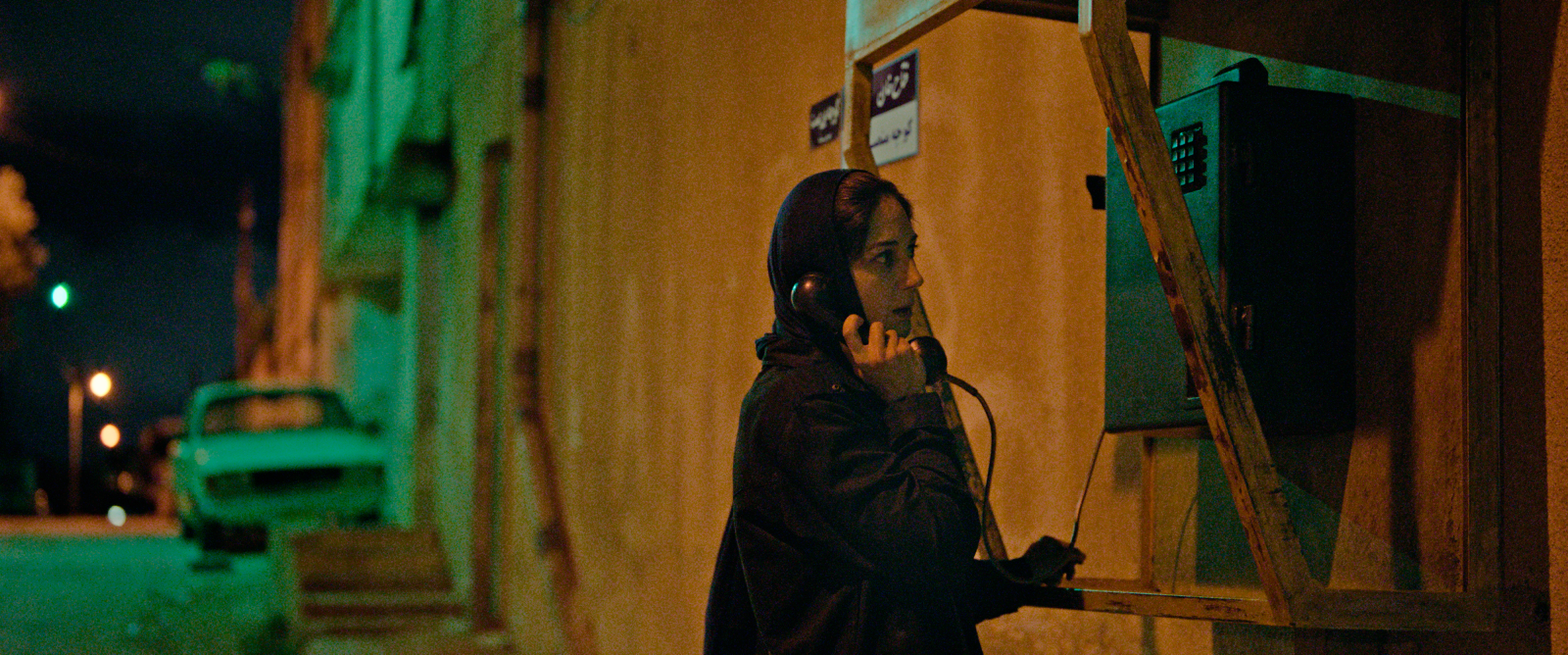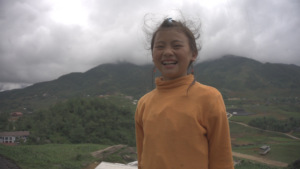It’s nothing out of the ordinary for the lengthy queues at the Melbourne International Film Festival (MIFF) to quietly buzz with excitement, and those for Holy Spider (Ali Abbasi, 2022) were no exception. Like June’s Sydney Film Festival (SFF), MIFF in August finds itself curiously positioned when it comes to the international rollout of big-name movies: falling just after Cannes but before major North American festivals in Toronto and New York, its calendar position means that Australian audiences frequently have the opportunity to see movies hyped at Cannes before they premiere in the United States. Even for the casual filmgoer, there’s often a satisfying realisation that – at least, in the context of US-dominant film discourse – we saw it first.
Holy Spider came to Melbourne – where I saw it – on the back of its Australian premiere at SFF a month or so earlier. But it had something the previous screening didn’t: an in-person introduction by the film’s star, Zar Amir Ebrahimi, who was clearly still riding high after becoming the first Iranian woman to win the Best Actress award at Cannes. And the audience shared in her elation; as seemingly one of the very few non-Iranians at the screening I attended, I noticed a palpable spirit of community among the expats, many of whom spoke about their pride in Iranian cinema as they waited in the the queue. A young man I chatted to as we waited could barely contain himself, for reasons he was eager to share with me: he was involved in the production of Noora Niasari’s then-forthcoming Australian feature Shayda (2023), in which Amir Ebrahimi stars alongside local legend Leah Purcell.[1]See Annika Morling, ‘Looking to Spring: Fear and Regeneration in Noora Niasari’s Shayda’, Metro, no. 216, 8 October 2023, <https://metromagazine.com.au/looking-to-spring/>, accessed 8 February 2024. The already-established and in-demand Amir Ebrahimi was attached to Niasari’s film before the Cannes win, the accolade only adding further to the thrill her Australian collaborators clearly felt to be working with her.
Yet there was a striking tension between this air of enthusiasm and the bleak brutality of the film itself, focusing as it does on the story of one of Iran’s most notorious serial killers, Saeed Hanaei; and Abbasi hardly adheres neatly to traditional ideas of what a poster boy for a given national cinema should be, either. While identifying as an Iranian filmmaker and clearly proud of his heritage, Holy Spider’s director and co-writer studied in Denmark and still lives in Copenhagen. His previous features, Shelley (2016) and Border (2018), were both set in Scandinavia and in the Danish and Swedish languages respectively; while, as a Danish co-production, Holy Spider was shortlisted as Denmark’s entry for Best International Feature Film at the 95th Academy Awards.[2]See Diana Lodderhose, ‘International Disruptors: Holy Spider Producer Sol Bondy on the Challenges of Bringing Ali Abbasi’s Iran-set Oscar Contender to Light & Why They Hope It Will “Serve” the Revolution’, Deadline, 12 January 2023, <https://deadline.com/2023/01/international-disruptors-holy-spider-producer-sol-bondy-on-the-challenges-of-bringing-ali-abbasi-iran-set-oscar-contender-to-light-why-he-hopes-it-will-serve-the-revolution-1235214520/>, accessed 8 February 2024.
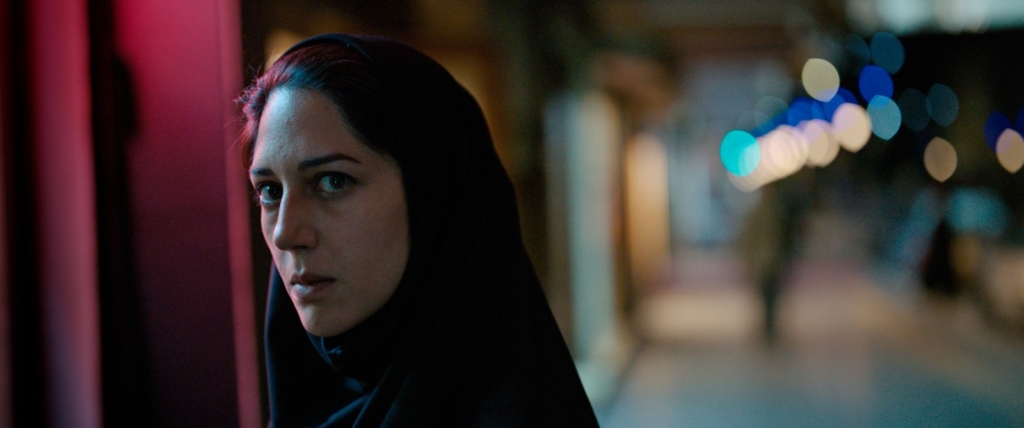
Similarly, what appears on the surface to be a cut-and-dried true-crime film is – when examined more closely – anything but straightforward. Set in the early 2000s, Holy Spider plays out through the eyes of (fictional) journalist Arezoo Rahimi (Amir Ebrahimi), who travels to the largely conservative north-eastern Iranian city of Mashhad, a popular site for religious pilgrims. A tough, no-nonsense woman, Rahimi is investigating a series of murders of poor sex workers that, the film reveals from the very outset, have been committed by construction worker Saeed[3]While the character shares the real-life serial killer’s given name, his family name in Holy Spider has been changed to Azimi. (Mehdi Bajestani). In the film’s chilling opening moments, we see the gruelling living conditions of his impoverished, desperate victims, and how he coldly lures them to their deaths as he poses as a customer and brings them to the small apartment he shares with his wife and two children. With little support from the local police, Rahimi takes matters into her own hands and goes undercover, meeting potential victims and posing as a sex worker herself in order to capture Saeed. While she is ultimately successful, his vocal insistence that he was cleaning up the streets of Mashhad in accordance with his religious beliefs gains traction in the broader community, revealing as much to Rahimi about the world she lives in as it does the motives of Saeed himself.
Riffing quite openly in places on […] And Along Came a Spider, Abbasi and (through the character of Rahimi) Amir Ebrahimi place the real-life killings at the heart of a broader portrait of misogyny in Iranian society.
Riffing quite openly in places on Maziar Bahari’s jaw-dropping 2003 TV documentary about the murders and their cultural fallout, And Along Came a Spider, Abbasi and (through the character of Rahimi) Amir Ebrahimi place the real-life killings at the heart of a broader portrait of misogyny in Iranian society. From Holy Spider’s very first moments – in which a bruised, topless unnamed sex worker busies herself getting ready in front of her mirror before leaving her children alone in her tiny, messy apartment to go to work – it is clear that life is hard for the women who inhabit this world. The poverty in which she lives is soon contrasted with the obvious wealth of her first client, but he treats her roughly all the same, telling her, ‘I’m going to rip that pussy apart […] I’ll destroy it.’ Long before she has met Saeed, we see that dealing with men’s violence against women – even if just through the language they use – is already part of her job. Another client is just as disrespectful, throwing her out of his car after refusing to pay her for a blow job. Despite another woman warning her to be careful because of the murders, her need for money places her at continued risk; although when a man arrives announced by no more than the quiet putt-putt-putting of his motorcycle, he seems comparatively meek in the context of her previous clients. Her instincts are as sharp as ever – as she approaches Saeed’s apartment from the crude, fluorescent-lit stairwell, she has a gut feeling that she should leave – but, by then, it is too late. The next morning, her body is discovered; she has become yet another victim of the murderer nicknamed ‘The Spider’, named for the metaphorical web he weaves to entrap his victims.
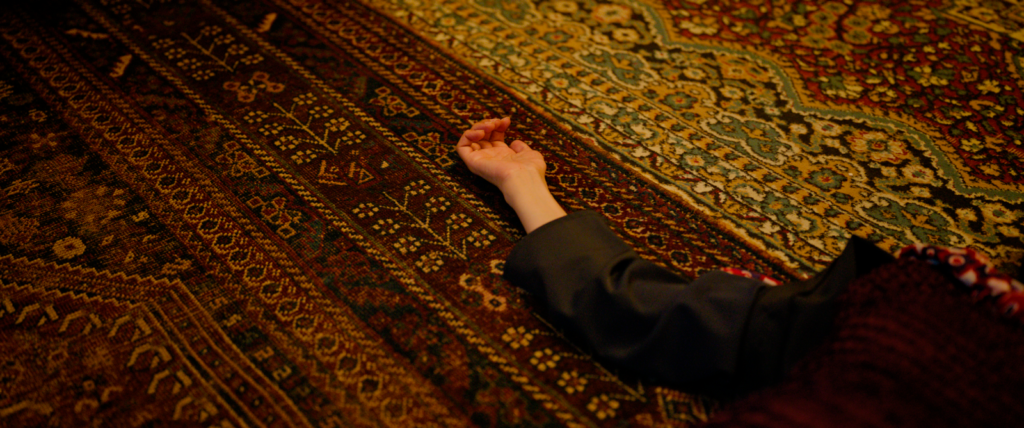
This is the Mashhad in which Rahimi suddenly finds herself as she gets off a crowded bus. Only moments later, she is being interrogated by a nosy taxi driver about the reason for her visit (he assumes she is there on pilgrimage). If Rahimi has already sensed judgement over being a young woman travelling alone, that only escalates when she is openly harassed at her hotel and informed she cannot stay there, despite already having a booking. We quickly learn, however, that Rahimi is not to be messed with: the hotel staff hurriedly change their minds when she pulls out her press card. These small encounters largely set the scene for the parade of confrontations with men that will mark Rahimi’s time in Mashhad, spanning the whole spectrum of misogyny from passive-aggressive bullying to sexual harassment and beyond, and climaxing with her final confrontation with Saeed himself – who, believing she is a sex worker, attempts to kill her.
This first section of Holy Spider is effective as a fierce and unflinching, if at times relatively pedestrian, true-crime film. In many ways a contemporary feminist twist on the hard-boiled noir protagonist, the chain-smoking, fast-talking, no-nonsense Rahimi does not hesitate to immerse herself in the dark underbelly of this supposedly devout city. Yet, as the film moves into its second act, it becomes clear that the hypocrisy she encounters – and its very human cost – is Abbasi’s chief concern. In this world, catching the killer isn’t enough, even if he confesses; because rather than hiding his crimes, Saeed boasts about them. He is proud, at times even gloating, as he emphatically frames his gruesome crime spree, ridding Mashhad’s streets of sex workers one woman at a time, as an act of religious devotion. What is even more chilling is the film’s depiction of how this position is shared by others. His young son, for instance, openly praises his father as a hero; and when a local shopkeeper gives the boy free groceries as a sign of support for his family, conveying his shared hope that his father will be found not guilty, it becomes glaringly apparent that Saeed’s attitude towards these women is widely held.
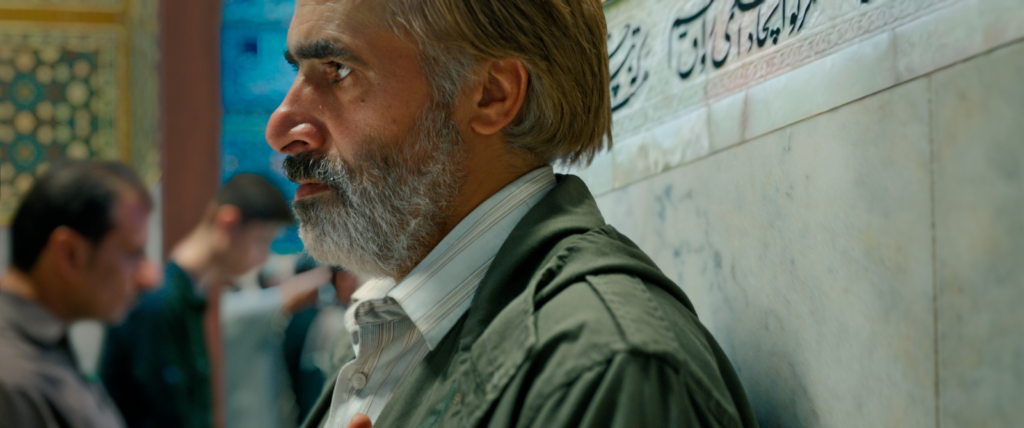
Critically, this manifests in what, until the film’s final moments, appears to be a sense of ambivalence from the courts – and the legal system as a whole – to these murders. As the heavily religious legal system and its representatives appear to be going through the motions of a trial, Saeed is given every reason to believe that they tacitly support him and are only moving ahead with the case for appearances’ sake, right up until the moment of his execution. It is this dynamic, rather than the more orthodox whodunnit structure that permeates so many true-crime films, that functions as the film’s primary site of suspense; the question here is never ‘Who is responsible for these crimes?’ but rather, ‘Will he be punished for the crimes we have seen him commit?’ In framing the narrative this way, Abbasi shifts the onus of responsibility away from one man’s individual decision to commit crimes and towards the society that has shaped his thinking. As Rahimi experiences time and time again throughout the film, misogyny is systemic in Mashhad; by charting her movement across the invisible lines that separate respectable society from its seedier underbelly, Abbasi reveals the hypocrisy and toxicity of this community as a whole.
As Rahimi experiences time and time again throughout the film, misogyny is systemic in Mashhad; by charting her movement across the invisible lines that separate respectable society from its seedier underbelly, Abbasi reveals the hypocrisy and toxicity of this community as a whole.
If the film ended with Saeed’s execution, it would be easier to interpret Holy Spider as a straightforward film about one man’s aberrant behaviour. But considering Abbasi’s film alongside And Along Came a Spider encourages a much deeper appreciation of the bigger picture both directors sought to reveal in strikingly different filmmaking modes. Centred on actual footage of Hanaei being interviewed by investigative journalist Roya Karimi, Bahari’s documentary reveals the factual traces that informed the construction of the character of Rahimi. While one of the most dramatic differences between the real story of Hanaei’s actual capture and its depiction in Holy Spider hinges on Rahimi’s involvement – it was sex workers themselves, rather than a journalist, who assisted the police in making the arrest in July 2001[4]See Roxana Hadadi, ‘Holy Spider’s Ending Uncovers a Tangled Web of Misogyny’, Vulture, 27 December 2022, <https://www.vulture.com/2022/12/netflixs-holy-spider-ending-explained.html>, accessed 8 February 2024. – what rings true in the film is Karimi’s experience of Hanaei’s misogyny. Reflecting on her memories of the interview in And Along Came a Spider, she vividly recalls Hanaei’s almost casual remark that she has the same surname as one of his victims. Clearly shaken, Karimi spells out what he was making implicit here for the benefit of the documentary’s audience: Hanaei was letting her know that, for all his talk about his supposedly righteous killing of sex workers and his perceived religious mission of ‘cleaning up’ the streets, she could have easily ended up as one of his victims herself.
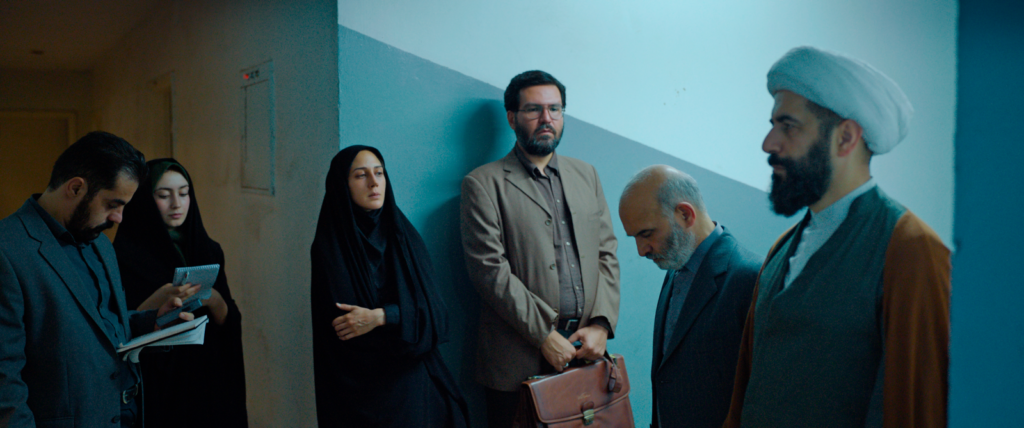
Rather than attempting a cookie-cutter replication of the ‘real’ story of Hanaei, then, Abbasi is ultimately less concerned with factual fidelity than a kind of emotional truth. And it is here, as Holy Spider ends, that the cinematic retelling of this story packs the most punch. In a short coda following Saeed’s execution, Rahimi sits on a night bus out of Mashhad replaying footage of an interview she previously shot with Saeed’s young son, a boy who has barely begun puberty. Those who have watched And Along Came a Spider will be struck by the unsettling realisation that Abbasi has carefully restaged a key moment in the documentary, in which Hanaei’s real-life son of around the same age is interviewed by Karimi. In each case, the boy eagerly re-enacts his father’s killings, excitedly moving around the apartment to show what his father would have done, step by step, in each crime. In the original interview, we witness the distressing spectacle of the boy eagerly grabbing a cushion and placing it on the floor as a stand-in for a woman victim as he explains how she would have died. But in Holy Spider – otherwise so carefully adapted as to replicate the pattern on the rug and the cushion fabric – the boy takes it a step further: he asks his little sister to come in and lie down so he can continue his re-enactment with a real-life ‘woman’.
The messaging here is not subtle, but it is enormously potent: Saeed’s victims could be your daughters. With the exception of the abovementioned sequence, this positioning of the next generation of women is made less explicitly in Holy Spider than in Bahari’s documentary. But if we start from that final scene and retrace our steps backwards in tandem with And Along Came a Spider, we can see that Abbasi has shrewdly crafted a love letter to the daughters of Hanaei’s real victims who we see interviewed in the documentary. And it is through these young girls – no older than ten at the time they were interviewed – that the potency of Rahimi as a fictional character comes most clearly into focus. Speaking of her sadness and anger at the loss of her mother, one girl in particular speaks with captivating frankness about her hopes and fears as she reflects on the past, present and her future. Confessing that she has been embarrassed to tell other children at her school the truth about what has happened to her mother, she emphasises the importance of her studies so she can not only look after herself – thus avoiding the poverty trap that her desperate mother found herself in – but also achieve her dream of becoming a reporter. When explaining her reason for choosing this career path, she is unambiguous: she wants to write the truth about what happened to her mother and the other women Hanaei murdered, and to present them as the innocent victims she knows them to be. Through Rahimi, Abassi and Amir Ebrahimi have effectively brought this dream to life, making visible these forgotten women whom Hanaei – and much of the society he lived in – shamefully deemed disposable.
Endnotes
| 1 | See Annika Morling, ‘Looking to Spring: Fear and Regeneration in Noora Niasari’s Shayda’, Metro, no. 216, 8 October 2023, <https://metromagazine.com.au/looking-to-spring/>, accessed 8 February 2024. |
|---|---|
| 2 | See Diana Lodderhose, ‘International Disruptors: Holy Spider Producer Sol Bondy on the Challenges of Bringing Ali Abbasi’s Iran-set Oscar Contender to Light & Why They Hope It Will “Serve” the Revolution’, Deadline, 12 January 2023, <https://deadline.com/2023/01/international-disruptors-holy-spider-producer-sol-bondy-on-the-challenges-of-bringing-ali-abbasi-iran-set-oscar-contender-to-light-why-he-hopes-it-will-serve-the-revolution-1235214520/>, accessed 8 February 2024. |
| 3 | While the character shares the real-life serial killer’s given name, his family name in Holy Spider has been changed to Azimi. |
| 4 | See Roxana Hadadi, ‘Holy Spider’s Ending Uncovers a Tangled Web of Misogyny’, Vulture, 27 December 2022, <https://www.vulture.com/2022/12/netflixs-holy-spider-ending-explained.html>, accessed 8 February 2024. |
